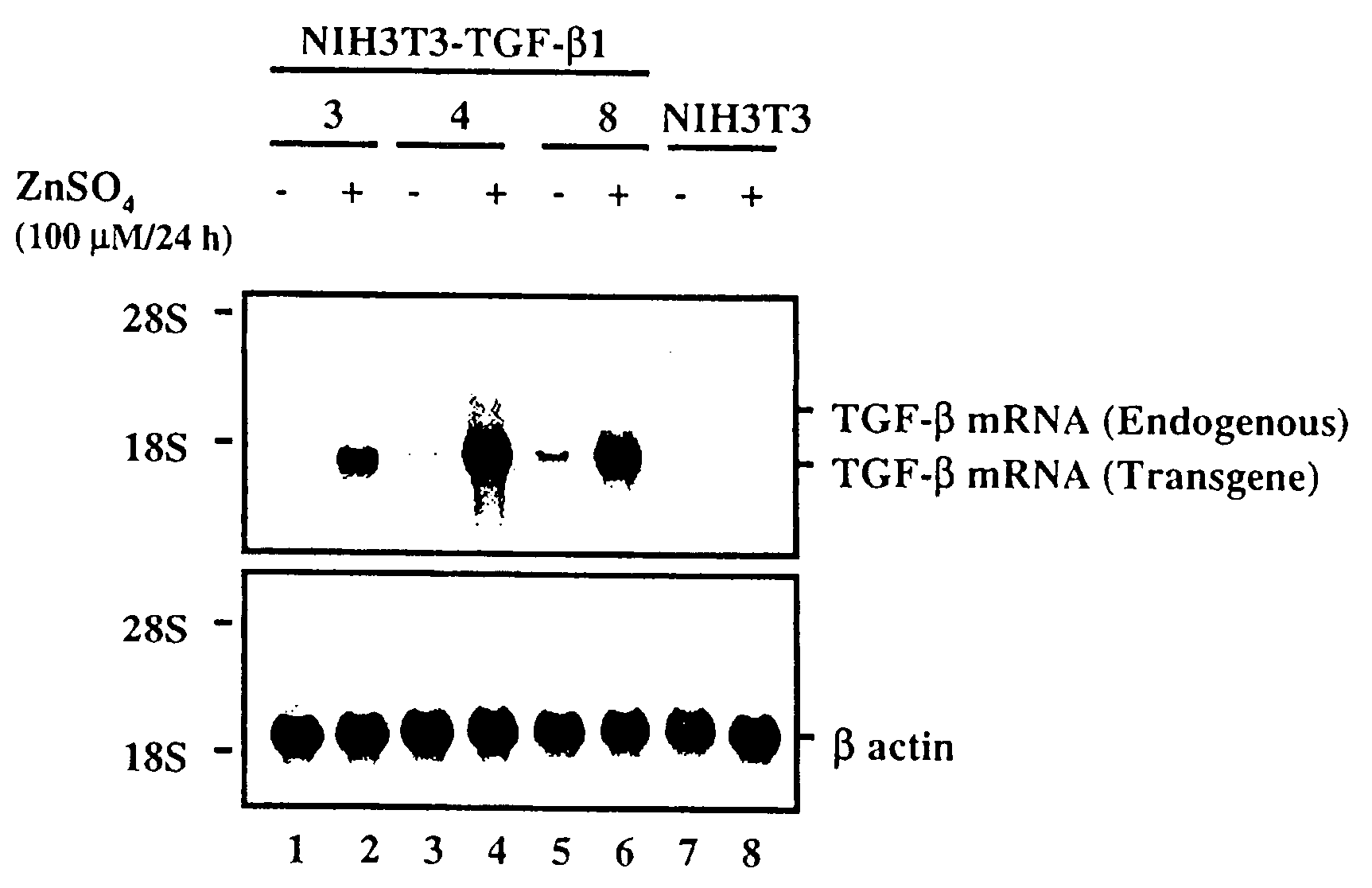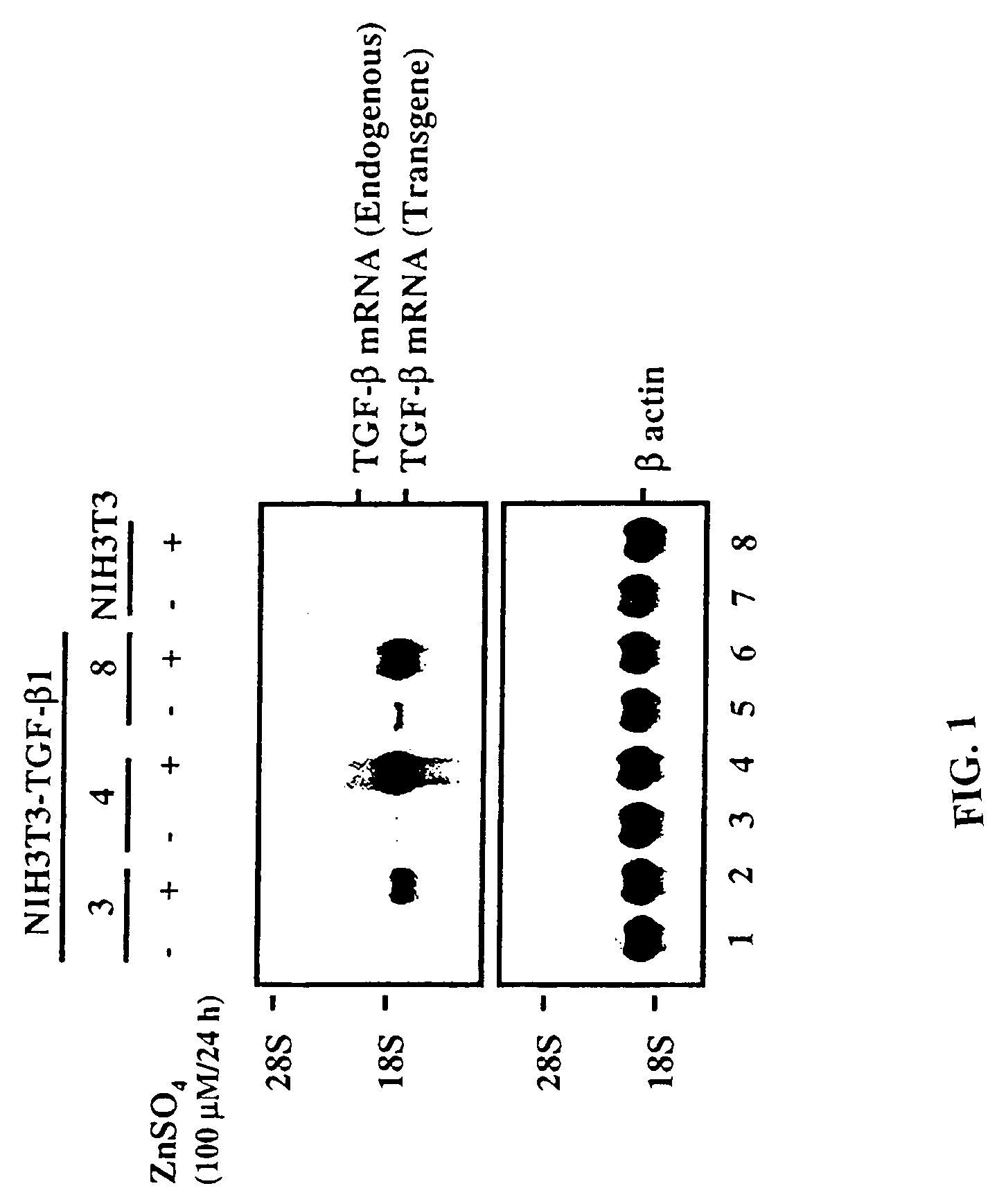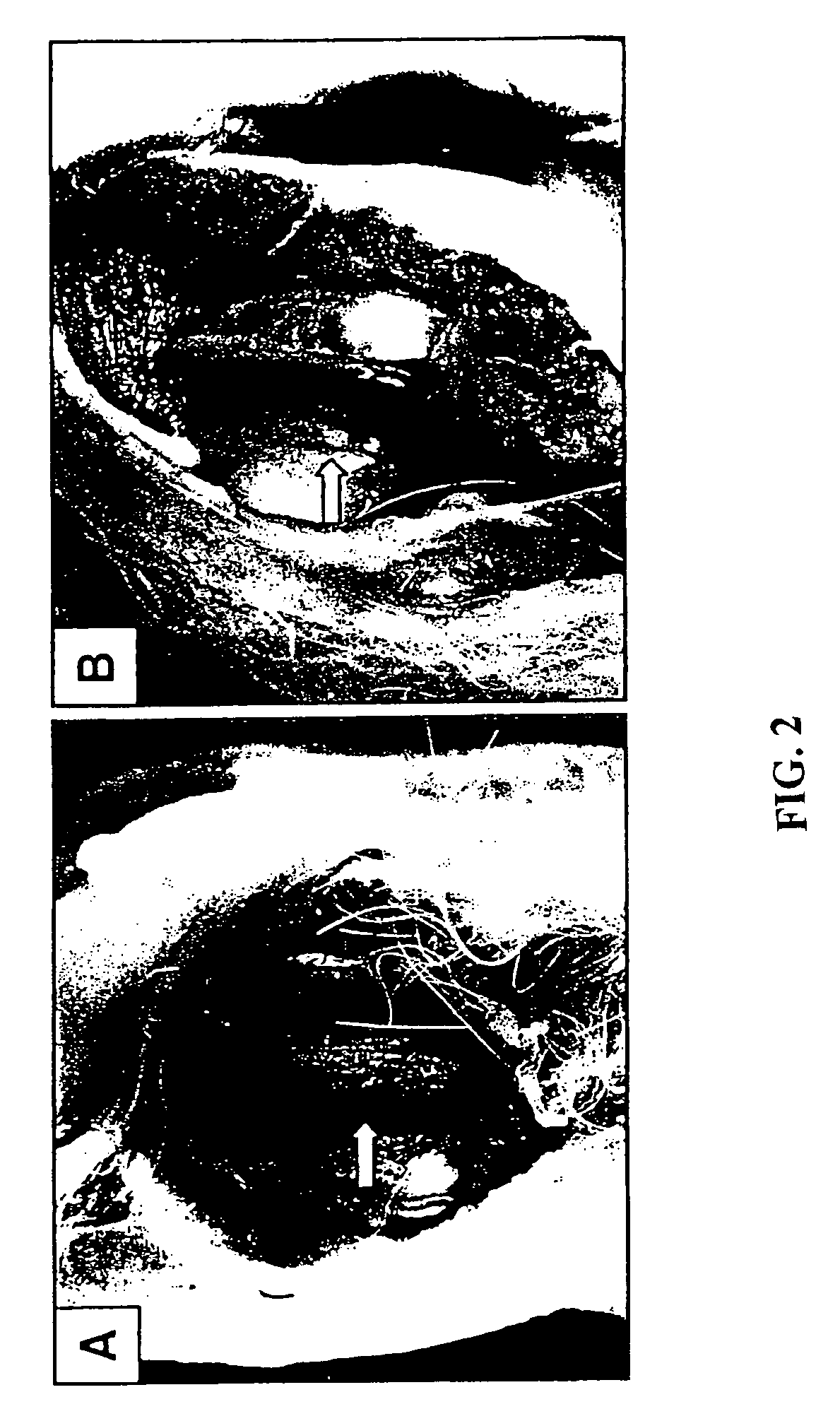Gene Therapy Using TGF-beta
a technology of gene therapy and tgfbeta, which is applied in the direction of biocide, drug composition, peptide/protein ingredients, etc., can solve the problems of inefficiency of traditional routes of drug delivery, inability to regenerate damaged hyaline cartilage, and inability to carry the drug to the join
- Summary
- Abstract
- Description
- Claims
- Application Information
AI Technical Summary
Benefits of technology
Problems solved by technology
Method used
Image
Examples
example i
Materials and Methods
[0119]Plasmid Construction
[0120]To generate the metallothionein expression construct (pM), the metallothionein I promoter (−660 / +63) was generated by polymerase chain amplification using genomic DNA using Xba I and Bam HI restriction sites built into the oligonucleotides used for amplification. The amplified fragment was subcloned into Xba I-Bam HI sites of pBluescript (Stratagene, La Jolla, Calif.). The plasmid pmTβ1 was generated by subcloning a 1.2-kb Bgl II fragment containing the TGF-01 coding sequence and a growth hormone poly A site at the 3′ end into the Bam HI-Sal I sites of pM.
[0121]Cell Culture and Transfections—The TGF-β cDNA was transfected into fibroblasts (NIH 3T3-TGF-β1) or human foreskin fibroblast / TGF-β1. They were cultured in Dulbecco's Modified Eagle's Medium (GIBCO-BRL, Rockville, Md.) with 10% concentration of fetal bovine serum. The TGF-β1 cDNA sequence was added into the pmTβ1 vector with a metallothionein gene promoter. A neomycin resist...
example ii
Results
[0127]Stable cell line—Transfection was carried out by using the calcium phosphate coprecipitation method (FIG. 1). About 80% of the surviving colonies expressed the transgene mRNA. These selected TGF-β1-producing cells were incubated in a zinc sulfate solution. When the cells were cultured in 100 μM zinc sulfate solution, they produced mRNA. The TGF-μ secretion rate was about 32 ng / 106 cells / 24 hr.
[0128]Regeneration of Rabbit Articular Cartilage Defect—The rabbit achilles tendons were observed to check the viability of NIH 3T3-TGF-β1 cells. At 106 cells / ml concentration, the tendon was grossly thicker than at the other two concentrations of 104 and 105. After making partial and complete cartilage defects, 0.3 ml of 106 cells / ml of the NTH 3T3-TGF-β1 cells were injected into knee joints. The joint was examined 2 to 6 weeks after injection. In partially damaged cartilage, we found newly formed hyaline cartilage; two weeks after injection, hyaline cartilage appeared and six wee...
example iii
[0131]Either control NIH3T3 or NIH3T3-TGF-β1 cells (5-7×105) were irradiated with 6000 rad. and injected into rabbit knee joints. These irradiated cells died completely in 3 weeks in a tissue culture dish. The injection procedure was the same as in the previous protocol with untreated cells. The knee joints were harvested at 3 or 6 weeks post injection. The specimens were fixed in formalin and decalcified with nitric acid. Sections of the specimens were made and embedded with paraffin and then cut into 0.5 μm thickness slices. In FIG. 10, Safranin-O staining (A-D & A′-D′) and Hematoxilin-Eosine staining (E-F & E′-F′) were done in the sections to observe the regenerated cartilage tissue microscopically. (Original magnification: (A, B, A′& B′) ×12.5; (C-F & C′-F′) ×400).
PUM
| Property | Measurement | Unit |
|---|---|---|
| thickness | aaaaa | aaaaa |
| thickness | aaaaa | aaaaa |
| transforming growth factor β | aaaaa | aaaaa |
Abstract
Description
Claims
Application Information
 Login to View More
Login to View More - R&D
- Intellectual Property
- Life Sciences
- Materials
- Tech Scout
- Unparalleled Data Quality
- Higher Quality Content
- 60% Fewer Hallucinations
Browse by: Latest US Patents, China's latest patents, Technical Efficacy Thesaurus, Application Domain, Technology Topic, Popular Technical Reports.
© 2025 PatSnap. All rights reserved.Legal|Privacy policy|Modern Slavery Act Transparency Statement|Sitemap|About US| Contact US: help@patsnap.com



